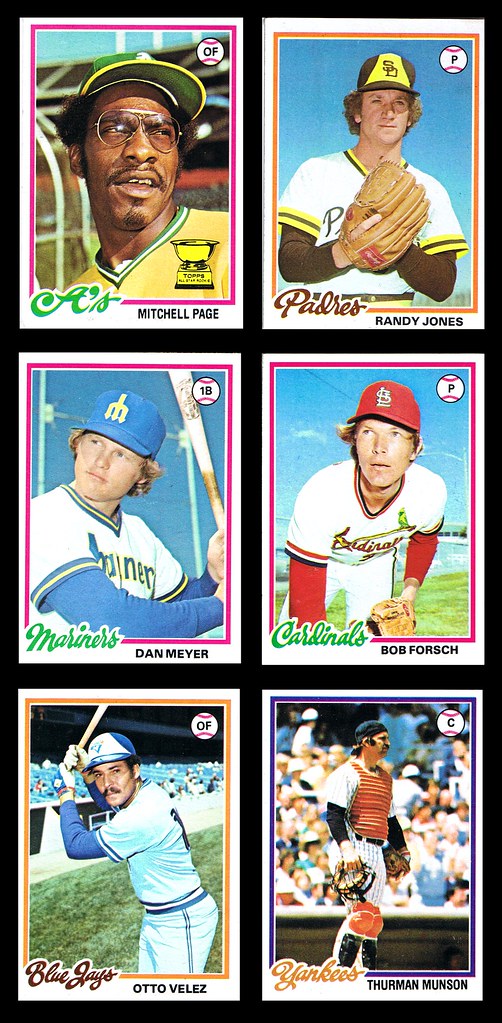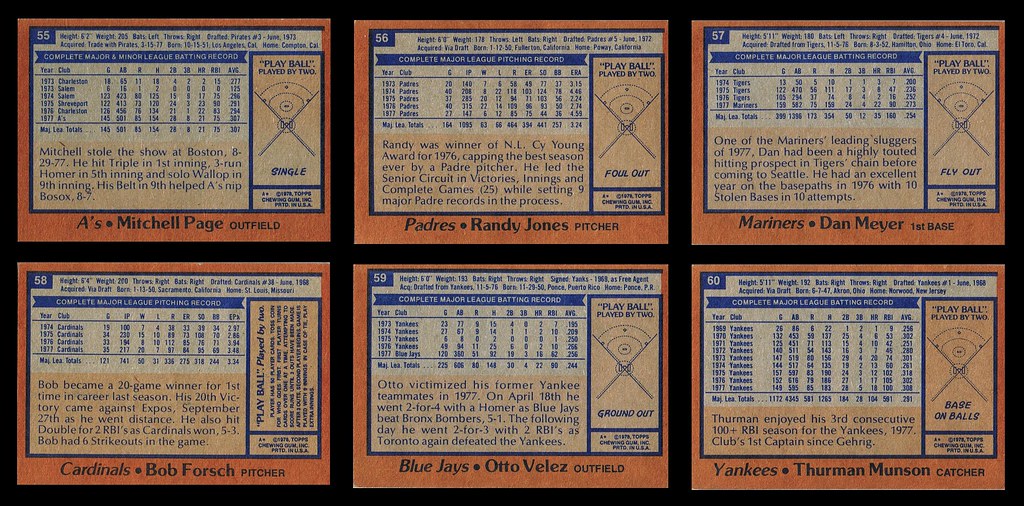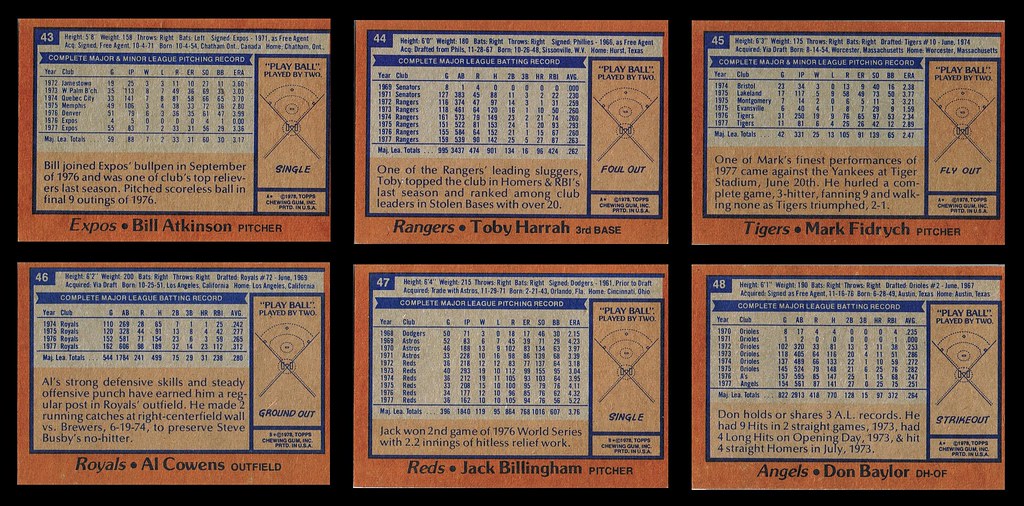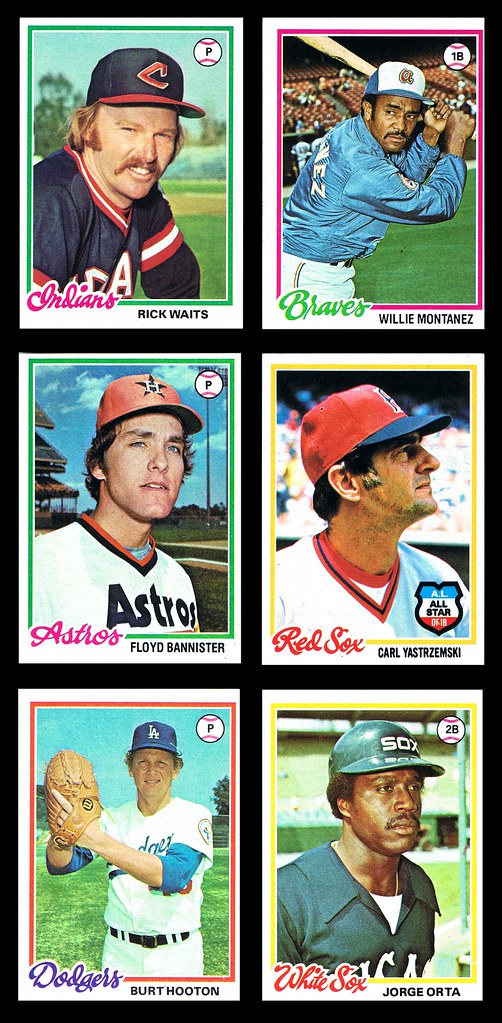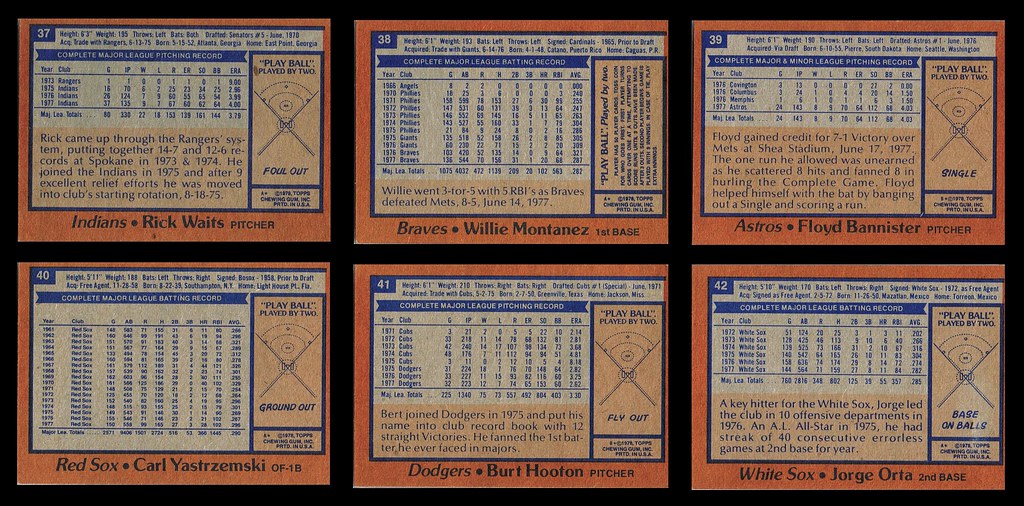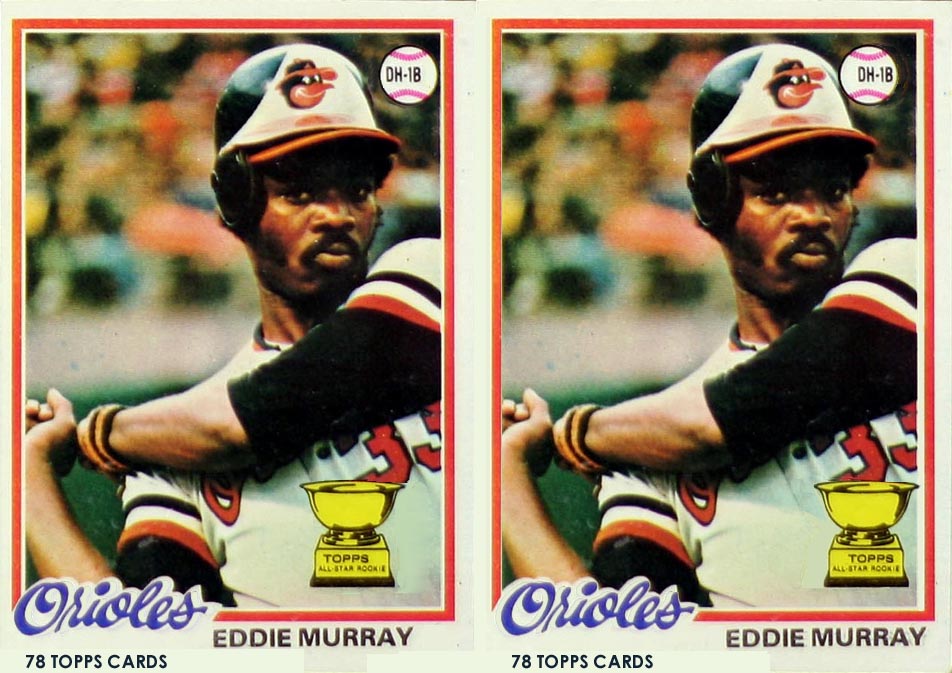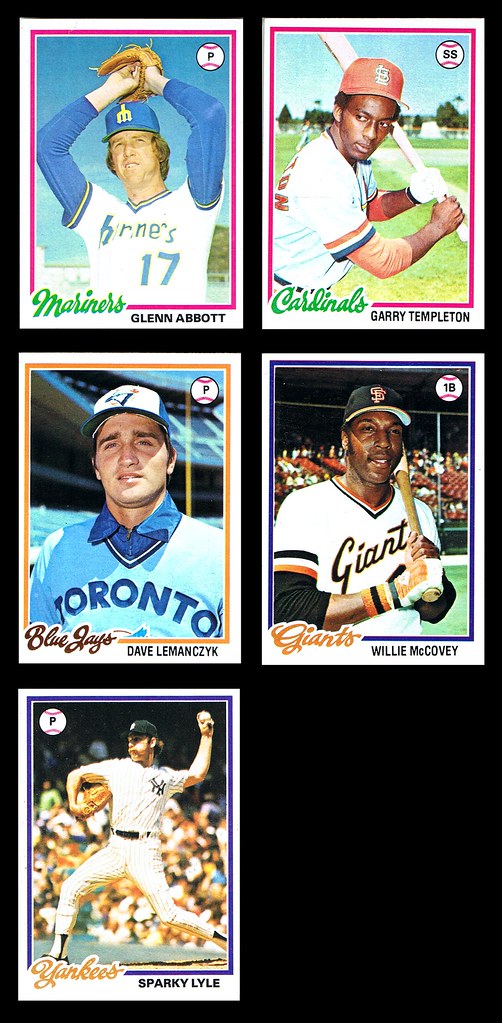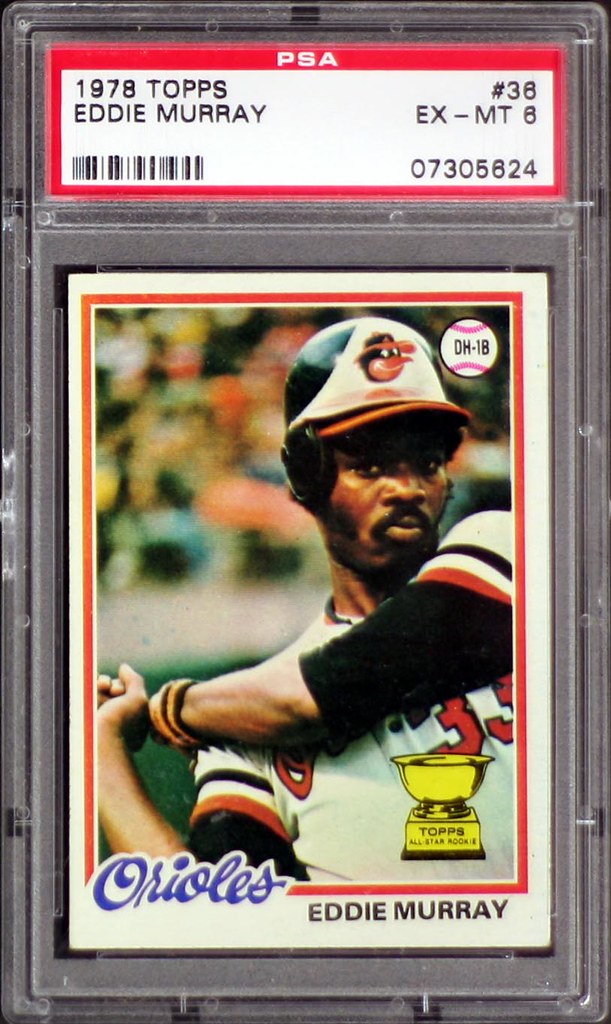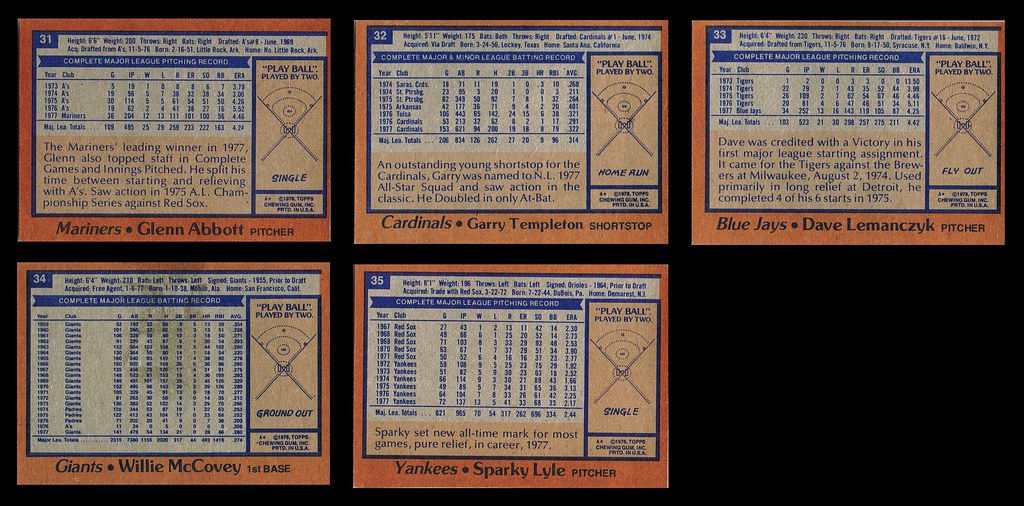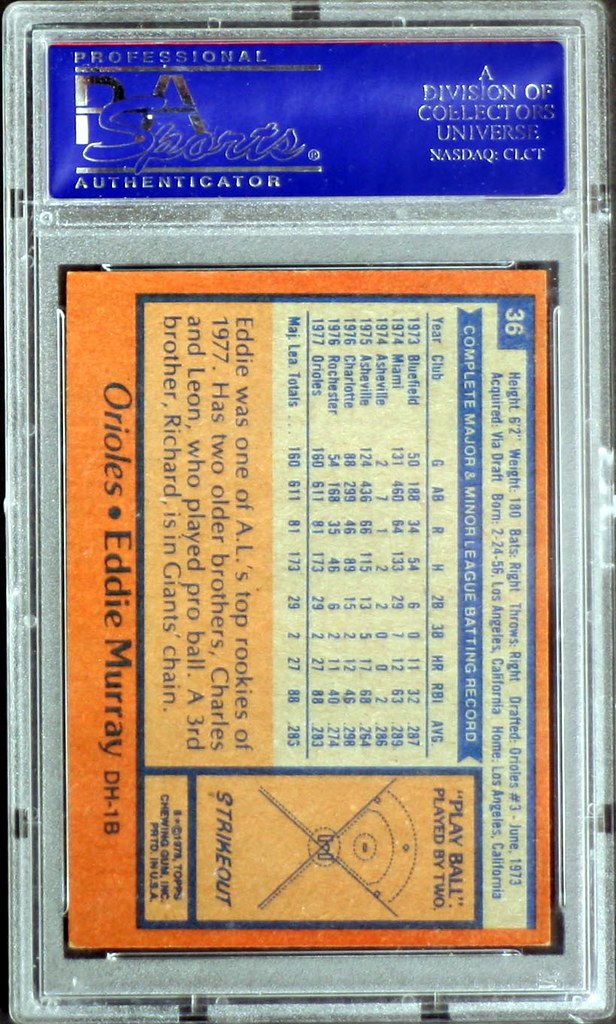#61 Larvell Blanks
#62 Jim Barr
#63 Don Zimmer Manager
#64 Gene Pentz
#65 Ken Singleton
#66 White Sox
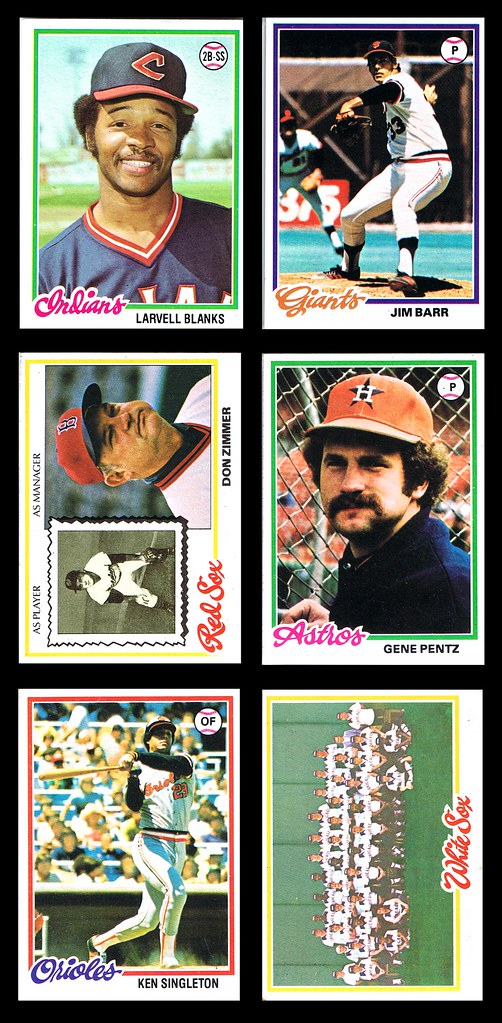
If you're too lazy to download the photo and rotate it, or at least rotate your head, here is the same image rotated. I'm not going to do this in the future.

THE DESIGN
Good: The Zimmer card, our first manager, shows the awesome way that Topps did manager cards in this set. Showing a picture of the manager as a player was a great idea, and brings some great historical photos into the set. I also really like the way they framed the old photo as if it were a newspaper clipping. It reminds us that in the 1940s and 1950s, the vast majority of what fans knew about players, including their appearances, came from newspapers. Bravo, Topps!
On the back of the Zimmer card, they give his playing stats, plus some managerial hightlights instead of the PLAY BALL game. Nice.
I love the fact that the back of the White Sox team card lists the players' uniform numbers. Uni numbers are becoming a lost item in today's game.
Bad: I love team cards and I am happy to see the White Sox one here, our first in the set. The problem with team cards is that the photos are too small to recognize people. I would love it if, especially, some of the non-player personnel were easier to see or were identified on the back of the card. I believe that not all of the team cards are the same in this set...we'll see some different examples coming up.
THE PHOTOS
Good: There isn't much to like in this set, except for Zimmer's incredible cheeks, Pentz's crazy white man afro and smirk, and the Singleton shot is a fairly nice and unorthodox action photo.
Visible behind Jim Barr is 2B Rob Andrews.
Bad: On Barr's card, Topps managed to get not one, but two guy's faces completely obscured by shadows. That horrible abstract "C" on Blanks' card just ruins it for me, although that's not Topps' fault. And I've already mentioned that the White Sox team photo, as with most team photos, makes it too hard to recognize individual people.

THE STATS
Of his 14 career triples, Larvell Blanks hit two off Ken Holtzman a few weeks apart in 1976. Interestingly, Holtzman was an Oriole when he gave up the first one, but a Yankee when he gave up the second one.
Barr pitched in some bad luck. He had a few seasons with an ERA better than league average but a losing record. His neutralized career record is 120-103 (.538) as compared to his actual numbers: 101-112 (.474).
From 1955 to 1964, Zimmer was among the leaders in most seasons with at least 10 HR but no more than 132 games played. The guy could hit for some power.
Pentz walked too many guys. The guys he walked the most are a Who's Who of some of the best offensive players in the game at the time.
Singleton finished his career with more walks than strikeouts. Among guys who finished with at least 1200 walks, Singleton has one of the lowest strikeout totals in history. He's just ahead of guys like, umm, Babe Ruth, Jimmie Foxx, and Hank Aaron. Many of the players ahead of Ken are guys who played in eras where strikeouts were less common.
THE COUNTERS
Hall of Famers: 11
(none)
Deceased: 3
(none)
Future managers: 7
(none)
Fathers and sons of major leaguers: 5
(none)
Loyalty counter: 8
(none)
Rookies of the Year: 7
(none)
Total all-star appearances: 199
(+1 for Zimmer as a player, +3 for Singleton)
Total MVP awards: 8
(none)
Total Cy Young awards: 4
(none)

